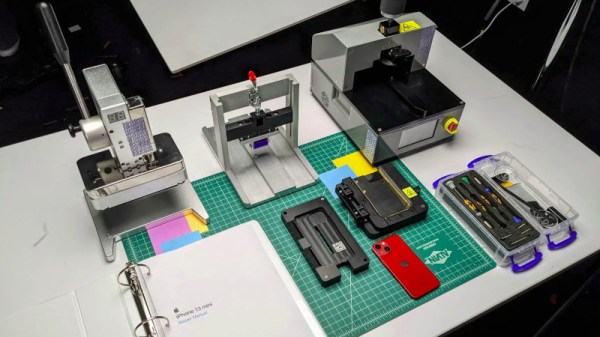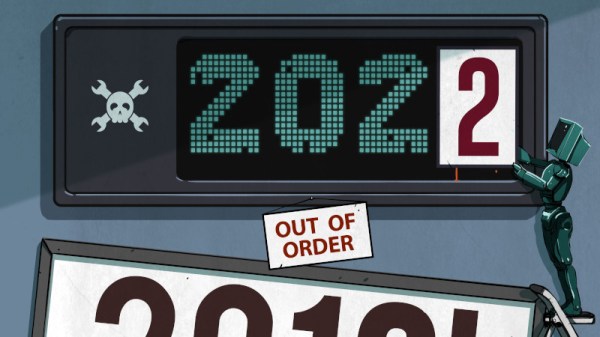The countdown for the first step on humanity’s return to the Moon has begun. The countdown for Artemis 1 started on Saturday morning, and if all goes well, the un-crewed Orion spacecraft atop the giant Space Launch Systems (SLS) booster will liftoff from the storied Pad 39B at Cape Canaveral on Monday, August 29, at 8:33 AM EDT (1233 GMT). The mission is slated to last for about 42 days, which seems longish considering the longest manned Apollo missions only lasted around 12 days. But, without the constraint of storing enough consumables for a crew, Artemis is free to take the scenic route to the Moon, as it were. No matter what your position is on manned space exploration, it’s hard to deny that launching a rocket as big as the SLS is something to get excited about. After all, it’s been 50 years since anything remotely as powerful as the SLS has headed to space, and it’s an event that’s expected to draw 100,000 people to watch it in person. We’ll have to stick to the NASA live stream ourselves; having seen a Space Shuttle launch in person in 1990, we can’t express how much we envy anyone who gets to experience this launch up close.
Continue reading “Hackaday Links: August 28, 2022”
right to repair55 Articles
Did You See A John Deere Tractor Cracked At DEF CON?
The Internet, or at least our corner of it, has been abuzz over the last few days with the news of a DEF CON talk by [Sick.Codes] in which he demonstrated the jailbreaking of the console computer from a John Deere tractor. Sadly we are left to wait the lengthy time until the talk is made public, and for now the most substantive information we have comes from a couple of Tweets. The first comes from [Sick.Codes] himself and shows a game of DOOM with a suitably agricultural theme, while the second is by [Kyle Wiens] and reveals the tractor underpinnings relying on outdated and un-patched operating systems.
You might ask why this is important and more than just another “Will it run DOOM” moment. The answer will probably be clear to long-term readers, and is that Deere have become the poster child for improper use of DRM to lock owners into their servicing and deny farmers the right to repair. Thus any breaches in their armor are of great interest, because they have the potential to free farmers world-wide from this unjust situation. As we’ve reported before the efforts to circumvent this have relied on cracked versions of the programming software, so this potential jailbreak of the tractor itself could represent a new avenue.
As far as we’re aware, this has so far taken place on the console modules in the lab and not in the field on a real tractor. So we’re unsure as to whether the door has been opened into the tractor’s brain, or merely into its interface. But the knowledge of which outdated software can be found on the devices will we hope lead further to what known vulnerabilities may be present, and in turn to greater insights into the machinery.
Were you in the audience at DEF CON for this talk? We’d be curious to know more. Meanwhile the Tweet is embedded below the break, for a little bit of agricultural DOOM action.
Continue reading “Did You See A John Deere Tractor Cracked At DEF CON?”
The Huge Apple Toolkit For Fixing Your IPhone
It’s been a frequent criticism of Apple, that their products are difficult to repair. They’ve hit back with a self-repair program for iPhones, and should you wish to take advantage of it they will hire you a tool kit. Not the iFixit box you might expect, instead they give you two hefty suitcases that contain 36 Kg of tools and equipment. Yes, you can repair an iPhone, but they ensure that it’s not for the faint-hearted.
In the kit is an impressive array of everything you might need for your iDevice, including the proper heat plate and press for the job. None of that messing about with a hot air gun for your $49 rental cost and $1200 if you don’t return the tools, but it remains an impossibly difficult and expensive process for all but the most dedicated of Apple fanboy technicians.
The sense from the Verge article is that Apple have had their arm twisted to the extent that they must provide a repair option, but they’ve gone to extravagant lengths to make it something nobody in their right mind would pursue. There’s an attraction in the idea of playing with a fully-equipped Apple repair kit for a few days, but maybe it’s not worth the cost.
Even without the Apple toolkit, it’s still possible to upgrade your iPhone.
Thanks [Nikolai Ivanov] for the tip.
For Once, The Long Arm Of John Deere Presses The Right Button
Over many years now we’ve covered right-to-repair stories, and among them has been a constant bête noire. The American farm machinery manufacturer John Deere whose instantly recognisable green and yellow tractors have reliably tilled the soil for over a century, have become the poster child for inappropriate use of DRM. It’s enough to make any farmer see red, but there’s a story from CNN which shows another side to manufacturer control. A Deere dealership in Melitopol, Ukraine, was looted by invading Russian forces, who took away an estimated $5m worth of farm machinery. The perfect crime perhaps, save for the Deere computer system being used to remotely disable them leaving the crooks with combine harvesters they can’t even start.
It makes for a good news story showing the Ukranians getting one over on the looters, and since on-farm thefts are a hot topic anywhere in the world it’s not entirely unexpected that Deere would have incorporated a kill-switch in their products. Recently we covered a look at how the relationship between motor vehicle owner and manufacturer is changing from one of product ownership to software licence, and this is evidently an example of the same thing in the world of machinery. It’s reported that the looters are seeking the help of tractor hackers, which may be unfortunate for them since the world’s go-to source for hacked Deere software is Ukraine. Perhaps they would be better remembering that Russia has legendary tractors of its own.
Thanks [Robert Piston] for the tip.
From Car To Device: How Software Is Changing Vehicle Ownership
For much of the last century, the ownership, loving care, and maintenance of an aged and decrepit automobile has been a rite of passage among the mechanically inclined. Sure, the battle against rust and worn-out parts may eventually be lost, but through that bond between hacker and machine are the formative experiences of motoring forged. In middle-age we wouldn’t think of setting off across the continent on a wing and a prayer in a decades-old vehicle, but somehow in our twenties we managed it. The Drive have a piece that explores how technological shifts in motor vehicle design are changing our relationship with cars such that what we’ve just described may become a thing of the past. Titled “The Era of ‘the Car You Own Forever’ Is Coming to an End“, it’s well worth a read.
At the crux of their argument is that carmakers are moving from a model in which they produce motor vehicles that are simply machines, into one where the vehicles are more like receptacles for their software. In much the same way as a smartphone is obsolete not necessarily through its hardware becoming useless but through its software becoming unmaintained, so will the cars of the future. Behind this is a commercial shift as the manufacturers chase profits and shareholder valuations, and a legal change in the relationship between customer and manufacturer that moves from ownership of a machine into being subject to the terms of a software license.
This last should be particularly concerning to all of us, after all if we’re expected to pay tens of thousands of dollars for a car it’s not unreasonable to expect that it will continue to serve us at our convenience rather than at that of its manufacturer.
If you’re a long-time Hackaday reader, you may remember that we’ve touched on this topic before.
Header image: Carolyn Williams, CC BY 2.0.
Caps Wiki: Place For You To Share Your Repair Notes
A right-to-repair battle is being waged in courts. The results of it, we might not see for a decade. The Caps Wiki is a project tackling our repairability problem from the opposite end – making it easy to share information with anyone who wants to repair something. Started by [Shelby], it’s heavily inspired by his vintage tech repairs experience that he’s been sharing for years on the [Tech Tangents] YouTube channel.
When repairing a device, there are many unknowns. How to disassemble it? What are the safety precautions? Which replacement parts should you get? A sporadic assortment of YouTube videos, iFixit pages and forum posts might help you here, but you have to dig them up and, often, meticulously look for the specific information that you’re missing.
The Caps Wiki talks a lot about capacitor replacement repairs – but not just that. Any device, even modern ones, deserves a place on the Caps Wiki, only named like this because capacitor repairs are such a staple of vintage device repair. You could make a few notes about something you’re fixing, and have them serve as help and guideline for newcomers. With time, this won’t just become a valuable resource for quick repairs and old tech revival, but also a treasure trove of datapoints, letting us do research like “which capacitors brands or models tend to pass away prematurely”. Plus, it also talks about topics like mains-powered device repair safety or capacitor nuances!
Continue reading “Caps Wiki: Place For You To Share Your Repair Notes”
2021: As The Hardware World Turns
Well, that didn’t go quite as we expected, did it? Wind the clock back 365 days, and the world seemed to be breathing a collective sigh of relief after making it through 2020 in one piece. Folks started getting their COVID-19 vaccines, and in-person events started tentatively putting new dates on the calendar. After a rough year, it seemed like there was finally some light at the end of the tunnel.
Turns out, it was just a another train. New variants of everyone’s favorite acute respiratory syndrome have kept the pandemic rolling, and in many parts of the world, the last month or so has seen more new cases of the virus than at any point during 2020. This is the part of the Twilight Zone episode were we realize that not only have we not escaped the danger, we didn’t even understand the scope of it to begin with.
Case in point, the chip shortages. We can’t blame it entirely on the pandemic, but it certainly hasn’t helped matters. From video game systems to cars, production has crawled to a standstill as manufacturers fight to get their hands on integrated circuits that were once plentiful. It’s not just a problem for industry either, things have gotten so bad that there’s a good chance most of the people reading this have found themselves unable to get their hands on a part or two these last few months. If you were working on a hobby project, it’s a temporary annoyance. But for those who planned on finally bringing their latest big idea to market, we’ve heard tales of heartbreaking delays and costly redesigns.
It would be easy to look at the last twelve months and see nothing but disappointment, but that’s hardly the attitude you want to have at the beginning of the year. So let’s take the high road, and look back on some of the highlights from 2021 as we turn a hopeful eye towards the future.

















